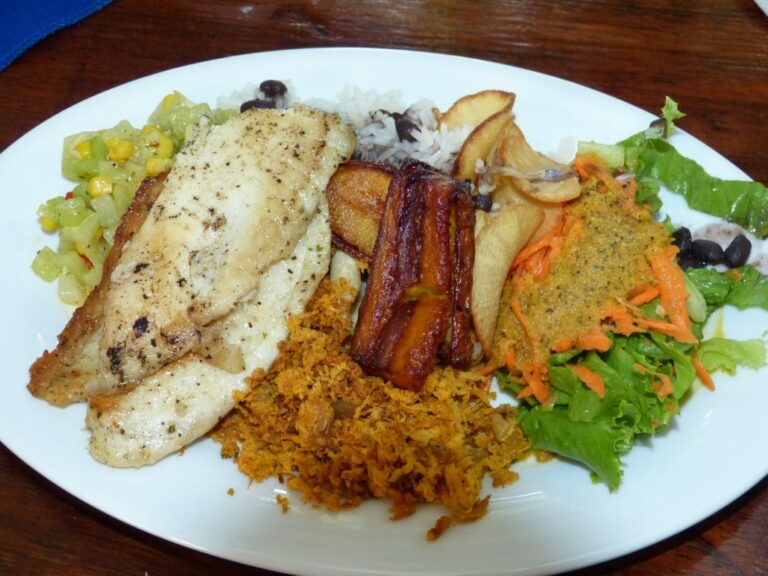Introduction
Latin American cuisine is known for its bold flavors, colorful ingredients, and diverse culinary traditions. The region’s gastronomy is shaped by its complex history, including the influence of indigenous cultures, European colonization, and African slavery. From Mexico’s spicy tamales to Argentina’s succulent asado, Latin American cuisine is a celebration of the region’s rich cultural heritage.
Costa Rican cuisine: Historical and cultural influences
Costa Rican cuisine is a unique blend of indigenous, Spanish, and African influences. The country’s fertile soil and tropical climate have allowed for the cultivation of a wide variety of fruits, vegetables, and grains. The indigenous people of Costa Rica, such as the Bribri and Boruca, were skilled farmers and hunters who relied on corn, beans, squash, and root vegetables as staples in their diet. When the Spanish arrived in the 16th century, they introduced new ingredients such as rice, wheat, and spices like cinnamon and cloves. Finally, the arrival of African slaves in the 18th century brought the use of coconut milk, plantains, and other tropical ingredients to Costa Rican cuisine.
Ingredients: The unique flavors of Costa Rican dishes
One of the defining features of Costa Rican cuisine is its use of fresh, locally sourced ingredients. Rice and beans are a staple in many dishes, served with variations such as Gallo Pinto, a breakfast dish of rice, beans, and spices, or Casado, a lunch dish featuring rice, beans, salad, and a meat or fish option. Other popular ingredients in Costa Rican cuisine include plantains, yucca, corn, and a variety of tropical fruits such as mango, papaya, and pineapple. Seafood, chicken, and pork are also common proteins in Costa Rican dishes.
Traditional dishes: Must-try foods in Costa Rica
Some of the most popular and quintessential dishes in Costa Rican cuisine include:
- Arroz con pollo – a rice and chicken dish flavored with vegetables and spices
- Ceviche – raw fish marinated in citrus and spices
- Olla de carne – a hearty beef and vegetable soup
- Chifrijo – a snack of rice, beans, and pork topped with avocado and pico de gallo
- Tamales – a traditional dish of steamed corn masa filled with meat and vegetables
Commonalities: Similarities with other Latin American cuisines
While Costa Rican cuisine has its own unique flavors and ingredients, it also shares some similarities with other Latin American cuisines. For example, rice and beans are staples in many dishes throughout the region, and many countries have their own variations. Other commonalities include the use of spices, tropical fruits, and seafood.
Differences: What sets Costa Rican cuisine apart
One of the main differences between Costa Rican cuisine and other Latin American cuisines is its focus on fresh, simple ingredients. While other countries may rely on complex spice blends or elaborate cooking techniques, Costa Rican dishes often let the natural flavors of the ingredients shine through. Additionally, the country’s proximity to both the Pacific Ocean and the Caribbean Sea means that there is a wide variety of seafood dishes available in Costa Rican cuisine.
Fusion cuisine: New culinary trends in Costa Rica
In recent years, Costa Rican cuisine has seen a rise in fusion cuisine, incorporating elements from other cultures such as Japanese, Italian, and Chinese. This fusion of flavors has led to innovative dishes such as sushi with plantains, or pasta with seafood in coconut milk sauce. This trend reflects the country’s growing diversity and openness to new culinary experiences.
Conclusion: The charm and diversity of Costa Rican gastronomy
Costa Rican cuisine is a celebration of the country’s rich history and diverse cultural influences. From its traditional rice and bean dishes to its innovative fusion cuisine, Costa Rican gastronomy offers a unique culinary experience that is both fresh and flavorful. Whether you’re a foodie looking to explore new flavors or simply looking to enjoy a delicious meal, Costa Rican cuisine is sure to satisfy.

